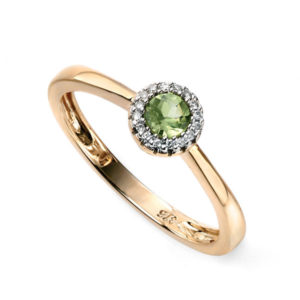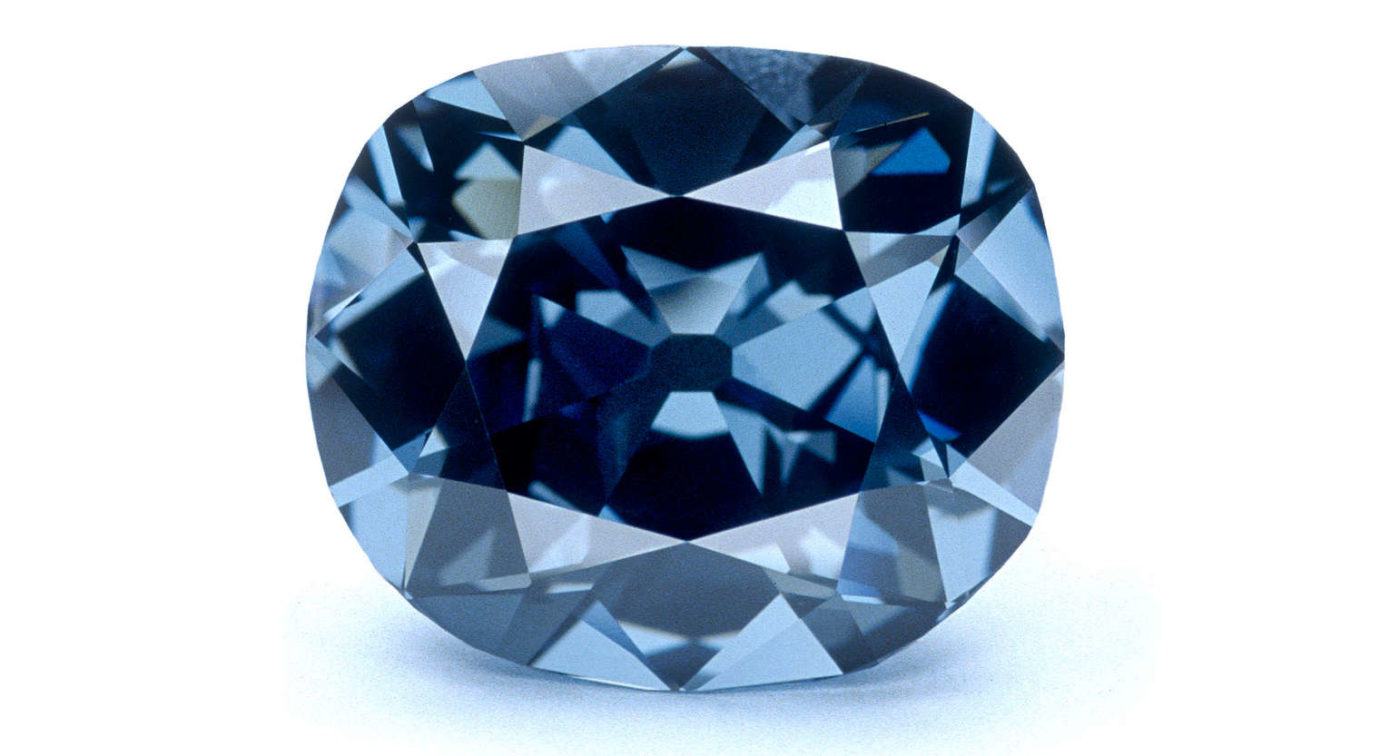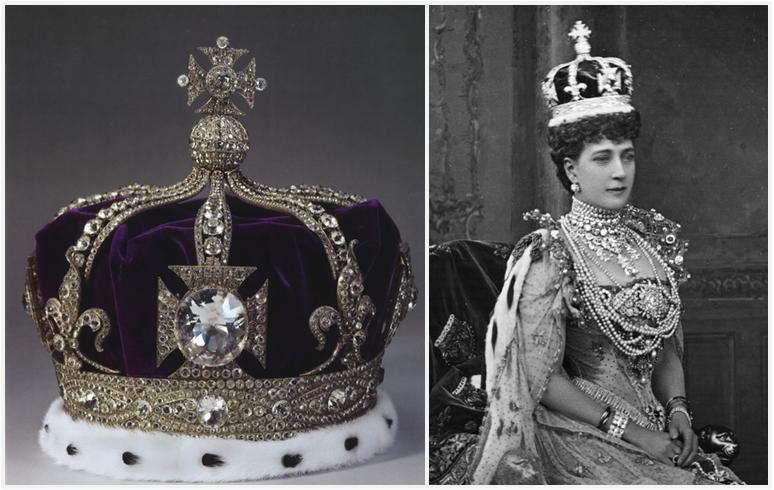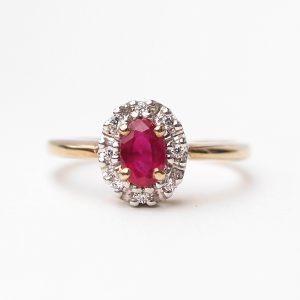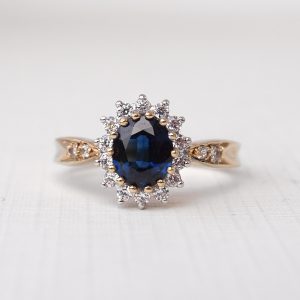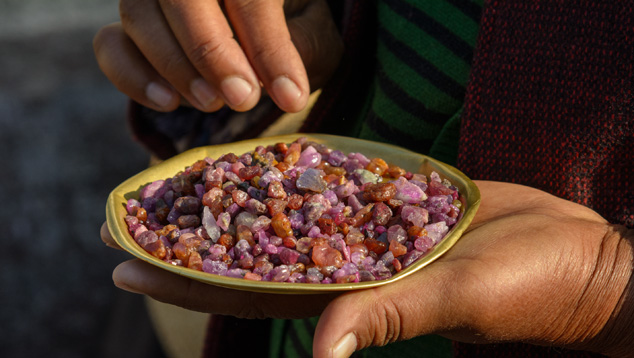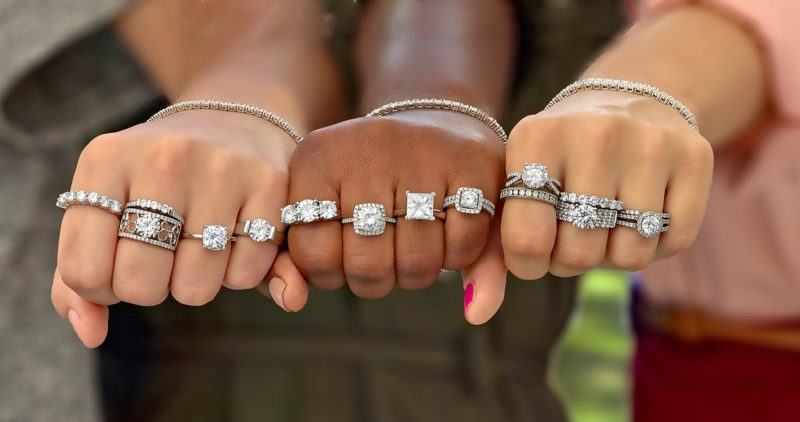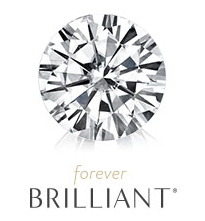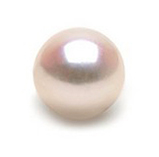Indiana’s search for a cursed crystal skull may not, it seems, be solely the stuff of Hollywood fantasy. Whether you’re wildly (or mildly) superstitious, or prefer to err very much on the side of reason, there is no denying that the history books are full of stories of supposedly cursed crystals and unlucky jewels. Some of which contain coincidences that are just a little bit more than uncanny. Below we list the 5 most infamous gemstones and their gruesome tales of death and demise! Prepare to be horrified!
1. The Hope Diamond
Mined from India in the 17th century, the rare 45.52 carat diamond leaves a trail of bloody deaths, misery and ruin in it’s wake. Below are some of the unfortunate people unlucky enough to have crossed its path:
- Jacques Colet who bought the Hope Diamond from Simon Frankel and committed suicide.
- Prince Ivan Kanitovski who bought it from Colet but was killed by Russian revolutionists.
- Prince Kanitovski who loaned it to Mlle Ladue who was murdered by her sweetheart.
- Simon Mencharides, who had once sold it to the Turkish sultan, was thrown from a precipice along with his wife and young child.
- Tavernier, who brought the stone from India to Paris was torn to pieces by wild dogs in Constantinople.
- King Louis XVI who gifted it to his beloved Marie Antoinette – the two were later executed. (Marie Antoinette was even rumored to be wearing the jewel when she was beheaded).
- King George IV of England, but was sold after his death in 1830 to help settle his enormous debts.
- A temporary wearer, Princess de Lamballe, who was torn to pieces by a French mob.
- Jeweler William Fals who recut the stone died a ruined man.
- William Fals’ son Hendrik, who stole the jewel from his father and later committed suicide.
- Henry Philip Hope (from where the stone gets it’s name), who sold the diamond to pay off debts.
- Joseph Frankels who also had to sell it to cover debts.
- Evalyn Walsh McLean, an American mining heiress and socialite who had many misfortunes while in possession of the diamond: her son died in a car accident, her daughter died of a drug overdose, her husband died in a sanitarium and her family was forced to sell their newspaper, the Washington Post, went bankrupt.
The stone was eventually donated by Harry Winston to the Smithsonian museum, among protests from the public scared that the stone might bring bad luck on the whole country.
2. Black Prince’s Ruby – The Great Impostor
The Black Prince’s ruby isn’t actually a ruby at all, but a large spinel – a red glassy mineral worth much less than a ruby, hence its infamous title, The Great Impostor.
This blood red stone has a very bloody history, full of battles, beheadings, and royal blunders. It first enters the history books in the middle of the 14th century when it was was pillaged by Don Pedro the Cruel, (emperor of Seville), from the corpse of the recently stabbed, Prince of Granda, Abū Sa’īd. In 1366, Don Pedro then gave the gemstone to Edward of Woodstock a.k.a The Black Prince, as payment for help during a revolt.
The gemstone disappears off the history books until 1415, where it is noted that King Henry V had attained the Black Prince’s ruby and set it in his battle helmet that he wore to defeat French forces at the Battle of Agincourt.
The stone continued to be passed down through British royalty, from Henry VIII, to Elizabeth I, to Charles I, who was beheaded for treason in 1649 and the stone was sold. Eventually it found its way back into British royalty and now sits at the center of the Imperial State Crown of England.
3. The Delhi Purple Sapphire — “Cursed” Quartz
The Delhi Purple Sapphire is another imposter, because it isn’t really a sapphire, but an amethyst. The cursed stone is said to have been stolen by a British solider from the Temple of Indra, the Hindu god of war and weather, in India during the violent Mutiny of 1857. It was brought to England by Colonel W. Ferris, whose family then supposedly suffered many financial and health woes.
The stone passed to Edward Heron-Allen, a scientist, write, and close personal friend of Oscar Wilde, who after a series of misfortunes befell him told Wilde he felt “an evil spirit” must be attached to the stone.
He twice gave the amethyst away to friends, who were also struck with misfortune and quickly returned the gift back to him. He even attempted to get rid of the stone by throwing it into the Regent’s Canal, but was found and returned to him 3 months later.
Heron-Allen warned that the Delhi Purple sapphire is “accursed and is stained with the blood, and the dishonor of everyone who has ever owned it.” Wary of its alleged powers, he locked the stone away in, not one, but seven(!) boxes, surrounded by good luck charms, and sent it to his bankers with strict instructions not to be unlocked until 3 years after his death.
In 1943, after his death, the amethyst was donated to London’s Natural History Museum where it is now permanently on display as part of the Natural History Museum’s Vault Collection of precious gemstones.
4. The Black Orlov — The Eye of Brahma Diamond
The Black Orlov, a 67.50 carat, cushion-cut diamond, was unearthed in India during the early 1800s, and apparently stolen by a monk from a sacred shrine in Southern India, allegedly being removed from the eye of a statue of Brahma – the Hindu god of creation, wisdom and magic.
This theft led to its curse; in 1932, diamond dealer J. W. Paris is said to have taken the diamond to the United States, and soon after committed suicide by jumping from a skyscraper in New York City. The diamond then was acquired by the Russian princesses Nadia Orlov, and Leonila Galitsine-Bariatinsky, both of whom jumped to their deaths in the 1940s.
In 1947, Charles F. Winson bought the diamond and cut it in to three pieces in an attempt to break the curse. It has since been purchased and resold by a succession of private owners, and has been displayed at several museums, including the American Museum of Natural History in New York City and London’s Natural History Museum.
5. The Koh-i-Noor Diamond
“He who owns this diamond will own the world, but will also know all its misfortunes. Only God or woman can wear it with impunity.”
This Hindu text from 1306 that accompanied the stone definitely turned out to be a warning to be heeded! Although its name means “Mountain of Light”, this gigantic 793 carat diamond has famously bought darkness upon its owners – the lives of those filled with torture, treachery, murder and mutilations.
It’s origins date are thought to date back to the 13th century, mined in Golconda, India, although its its first verifiable appearance isn’t until the 18th century, where it decorated the Mughal emperor’s Peacock Throne – a throne three times more expensive than the Taj Mahal!
Following the Mughal’s downfall, the diamond traded hands of Hindu, Mongolian, Persian, Afghan and Sikh rulers, leaving a gruesome and bloody trail behind it. Those who came into contact with it are known to have been bludgeoned to death with bricks, burned in oil, stabbed, poisoned, mutilated, blinded with hot needles, and even a Persian prince was crowned in molten lead in order to make him reveal the location of the diamond.
The British Royal family acquired it in 1950 with the reign of Queen Victoria and since then it has only been worn by women of the royal family, now sitting safely behind glass, at the centre of the Queen Mother’s crown in the Tower of London.
To see some gemstones that aren’t cursed – click below!
Shop Gemstones


